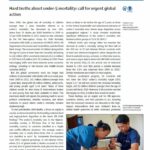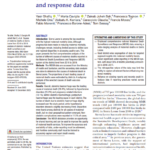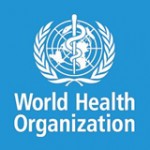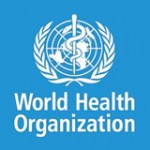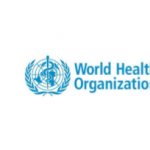Access to reliable and timely data about the causes of death is essential for planning and implementing health services.
A systematic analysis of mortality trends and events leading to deaths can help identify system breakdowns and address deficiencies in service delivery. This process shows a greater impact on practices and outcomes than other quality improvement strategies, particularly in settings where the audit process includes an action plan and clear targets. By establishing a multidisciplinary and no-blame environment, common problems and solutions can be identified.
The need to better understand why stillbirths and neonatal deaths occur, and what can be done to prevent them, has led to the development of Making Every Baby Count: Audit and Review of Stillbirths and Neonatal Deaths. It provides the methodology and tools for developing a mortality audit system with links to surveillance, civil registration and vital statistics, with instruction on counting, classifying and investigating stillbirths and neonatal deaths in order to prevent future avoidable deaths, in facilities and communities. There is also guidance on establishing a legal and ethical environment in which to create quality improvement processes, without fear of blame or punitive actions. Many countries already use the Maternal Death Surveillance and Response process as a strategy for addressing maternal mortality. This new WHO guide will enable countries to build on Maternal Death Surveillance and Response platforms in order to improve care for babies, within an overall framework of quality of care improvement and aligned with WHO’s quality of care initiative.
81
percentage of countries reported a national policy or guideline requiring notification all of maternal deaths within 24 hours.
67
percentage of countries reported a national policy or guideline for review of neonatal deaths.
44
percentage of countries that reported a national policy or guideline requiring review of stillbirths.
All data on this page represents the most recent data available, unless otherwise noted. Please visit our Newborn Numbers page and download the Excel spreadsheet to explore the data further.
More information
One of the key actions recommended in both the Every Newborn Action Plan (ENAP) and the Ending Preventable Maternal Mortality (EPMM) strategy is the institutionalization of maternal and perinatal death surveillance and response systems to enable a country’s use of audit data to track and prevent maternal and early newborn deaths as well as stillbirths.
The process of routine identification and timely notification of deaths is a continuous action cycle, ideally linking quality improvement from the local to the national level. Although women and their babies share the same period of highest risk, often with the same health workers present, there has been little movement towards capturing information for stillbirths and neonatal deaths. Basic information for every birth and death is needed, along with a critical review of selected deaths.
Mortality audit can have multiple entry points into the health system, ranging from a single hospital to a nationally mandated program covering the community and facility levels. Generally, deaths that occur in facilities have more information available compared to those in communities, and future cases may be easier to identify and prevent. However, we need to ensure all births and deaths are counted, no matter where they occur. We also need strategies to determine the number and causes of death among the 50 million births that take place in communities each year.
Key Resources
- Maternal and perinatal death and surveillance and response (2021)
- South Africa’s Perinatal Problem Identification Programme
- Towards greater effectiveness of perinatal death audit in low- and middle-income countries
- Counting every stillbirth and neonatal death through mortality audit to improve quality of care for every pregnant woman and her baby
- Making Every Baby Count WHO audit guide
- Making Every Baby Count policy brief
- Making Every Baby Count Video. Audit and Review of Stillbirths and Neonatal Deaths
- Setting up a Death Review Committee Video
